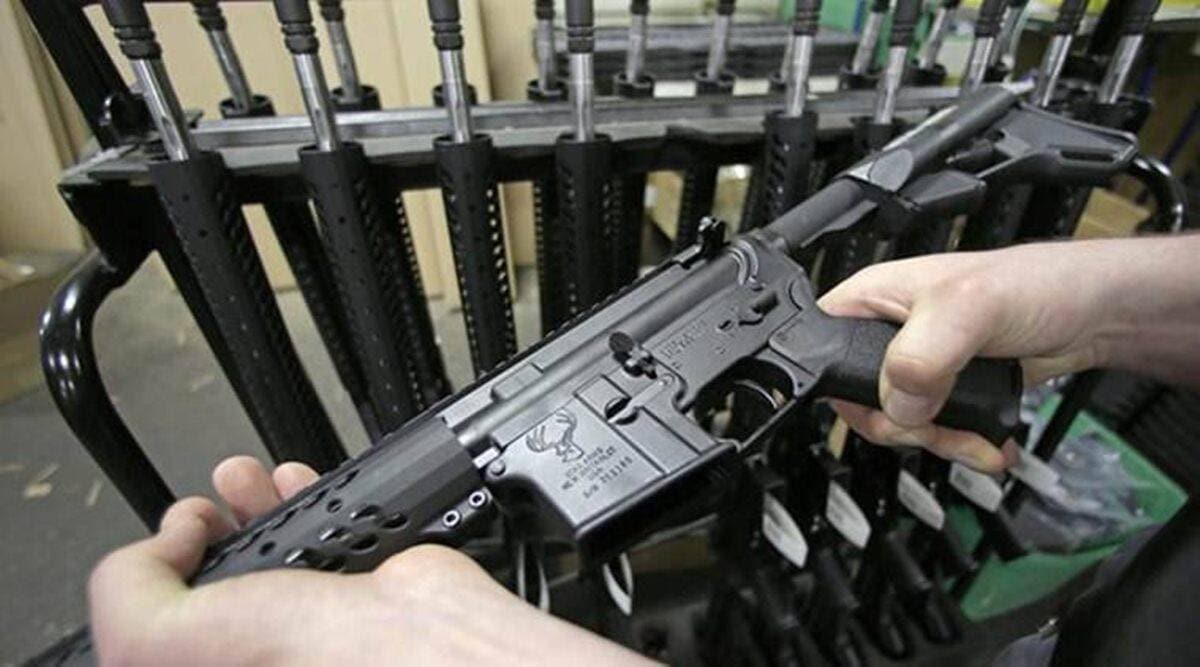 The report says, "The nature of the defects observed in the accidents indicated mainly the quality problems of various components, malfunctioning of ammunition and weapon damages." (Representative)
The report says, "The nature of the defects observed in the accidents indicated mainly the quality problems of various components, malfunctioning of ammunition and weapon damages." (Representative) A report tabled by the Comptroller and Auditor General (CAG) of India on Ordnance Factories and Defence Public Sector Undertakings (DPSUs) has said that in the assessment period of 2014-15 and 2018-19, as many as 584 accidents of 11 ordnance items were reported due to quality issues and malfunctioning of ammunition.
The audit report number 25 of 2021 of the CAG for the year ending March 2019 on Union Government (Defence Services) on Ordnance Factories and Defence Public Sector Undertakings was presented in Parliament on Wednesday.
The report contains analysis of the performance of Ordnance Factory Board (OFB) for 2018-19, audit of performance of Materials and Components (M&C) Group of Ordnance Factories, audit of functioning of Ordnance Equipment Group (OEG) along with audit of issues relating to DPSUs.
In October 2021, the Ministry of Defence (MoD) formed seven new DPSUs, which have taken over the operations of the 41 factories under the erstwhile Ordnance Factory Board (OFB).
In paragraph on quality conformance of the M&C items, the CAG reports says: “584 accidents involving 10 ammunition items and one tank item during 2014-15 to 2018-19 were reported from the users’ end. The nature of the defects observed in the accidents indicated mainly the quality problems of various components, malfunctioning of ammunition and weapon damages. Substantial time taken in defect investigation of accidents delayed remedial measures to overcome the quality deficiencies.” In the context of ordnance factories, users mainly refer to the armed forces.
The report also states: “Ordnance Factories have a system of multi-tiered quality checks by Quality Control (QC) section and Quality Assurance (QA) establishment attached with each factory. Recurrent return for rectification or rejections of M&C items at the QA stage and their reasons indicate inadequate and ineffective quality control checks by the factories and control and surveillance checks by the QA agencies (SQAEs) during the manufacturing process. Quality deficiencies in the M&C items as well as lapses in QC checks in the end product factories led to rejection of 11 end products valuing Rs 175 crore at the QA stage.”
On the issue of production performance, the report states: “Significant shortfalls of 10 per cent and above in issues were observed for 15 M&C items and for 16 end products. As a result, Army’s orders remained outstanding for 11 ammunition items and for three tank items as on March 31, 2019. OFB’s slippages in issue of end products was one of the key factors leading to critical deficiency of eight ammunition items, ranging from 15 to 93 per cent, in the Army’s stock. Among all the functional groups of the OFB, the M&C Group had the highest overheads — 35 to 51 per cent of cost of production — and showed an increasing trend during 2014-19. Main contributing elements for high overheads were supervision charges (37 to 42 per cent) and indirect labour charges (15 to 20 per cent of overheads) in M&C group. The reason was the holding of more supervisory staff and indirect Industrial Employees (IEs) as compared to direct IEs. Despite a higher number of supervisory staff there was slippage in production and issue of M&C items as well as quality deficiencies.”
On the issue of production planning, the report said: “The Army being the principal customer, their projected requirement is the key factor for planning capacity. However, there were mismatches between production capacity of Ordnance Factories for M&C items and end products and Army’s projected long-term requirement (2014). Against the requirement of capacity augmentation for nine M&C items and 11 end products, OFs augmented the capacity partially for one M&C item and four end products. Capacity augmentation projects for three M&C items and two end products, initiated by OFB or ordnance factories, were yet to be completed by January 2021, despite expiry of planned completion date by five to six years.”
“Audit also observed that for seven ammunition and one tank item, out of 19 selected end products, Army placed a smaller annual order during 2014-19 than their projected long-term requirement by two to 66 per cent. Hence, capacity augmentation only on the basis of Army’s long-term requirement without considering their annual order pattern is fraught with the risk of under-utilisation of augmented capacity,” the report added.
- The Indian Express website has been rated GREEN for its credibility and trustworthiness by Newsguard, a global service that rates news sources for their journalistic standards.

